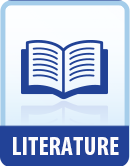|
This section contains 331 words (approx. 2 pages at 300 words per page) |

|
De Lint's narratives tend to be experimental, as if in constant rebellion against the expectations of his audience. This very rebelliousness is exhilarating and may account in part for the appeal of his work for teen-agers; his narratives seem to make their own rules, to stand apart from the ordinary, much as a reader might like to do. In the case of "In the House of My Enemy," he employs alternating narrative perspectives, one from the first-person point of view, the "I" of the narrative. This is Jilly Coppercorn commenting on herself, her feelings, and her observations of others, particularly Annie, with whom she feels a strong connection. The other narrative voice is thirdperson omniscient, meaning a point of view that allows the narrator to describe anything in the story, even the thoughts of the characters. The result of this is very effective because it creates...
|
This section contains 331 words (approx. 2 pages at 300 words per page) |

|




